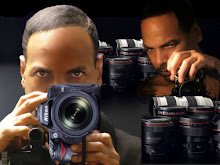

Widely considered one of the most influential musicians of the 20th century, Miles Davis was with his groups at the forefront of several major developments in jazz music including cool jazz, hard bop, free jazz and fusion. Many well-known jazz musicians made their names as members of Davis' ensembles .Miles Davis was born to a relatively affluent family in Alton, Illinois. His father, Dr. Miles Henry Davis, was a dentist. In 1927, the family moved to East St. Louis. They also owned a substantial ranch in northern Arkansas, where Davis learned to ride horses as a boy.
Davis' mother, Cleota Mae (Henry) Davis, wanted her son to learn the piano; she was a capable blues pianist but kept this fact hidden from her son. His musical studies began at 13, when his father gave him a trumpet and arranged lessons with local musician Elwood Buchanan. Davis later suggested that his father's instrument choice was made largely to irk his wife, who disliked the instrument's sound. Against the fashion of the time, Buchanan stressed the importance of playing without vibrato, and Davis would carry his clear signature tone throughout his career. Buchanan was said to slap Davis' knuckles every time he started using heavy vibrato.[1] Davis once remarked on the importance of this signature sound, saying, "I prefer a round sound with no attitude in it, like a round voice with not too much tremolo and not too much Baseline bass. Just right in the middle. If I can’t get that sound I can’t play anything.In 1944, the Billy Eckstine band visited East St. Louis. Dizzy Gillespie and Charlie Parker were members of the band, and Davis was taken on as third trumpet for a couple of weeks because Buddy Anderson was out sick. When Eckstine's band left Davis behind to complete the tour, the trumpeter's parents were still keen for him to continue formal academic studies
In the fall of 1944, following graduation from high school, Miles moved to New York City to study at the Juilliard School of Music.
Upon arriving in New York, Davis spent most of his first weeks in town trying to get in contact with Charlie Parker, despite being advised against doing so by several people he met during his quest, including the famous saxophonist Coleman Hawkins.[1]
Having finally succeeded in locating his idol, Davis became part of the milieu of musicians that centered around the jam sessions that were kept nightly in two of Harlem's night clubs, Minton's Playhouse and Monroe's, a group that at the time included many of the future protagonists of the bebop revolution, young musicians .
In the same period, he dropped out of Juilliard, having first asked permission from his father. In his autobiography, he criticized the Juilliard classes for centering too much on the classical European and "white" repertoire. He also did partly acknowledge that the Juilliard period contributed to the theoretical background, that he would rely greatly upon in later years.
He began playing professionally in many jazz combos, performing in several 52nd Street clubs with Coleman Hawkins and Eddie "Lockjaw" Davis. In 1945, he entered for the first time in a recording studio as a member of the group of Herbie Fields. This was the first of many recordings to which Davis participated in the following years, most of the time as a sideman. His first studio occasion as a leader came in 1946, with an occasional group called '"Miles Davis Sextet plus Earl Coleman and Ann Hathaway"', one of the rare occasions in which Davis - who was already a member of the Charlie Parker quintet - can be heard accompanying singers. Record dates in which Davis was featured as leader were the exception, rather than the rule, however: the next, isolated, date came around in 1947.Davis' influences included late 1960s acid rock and funk artists such as Sly and the Family Stone, James Brown and Jimi Hendrix, many of whom he met through Betty Mabry, a young model and songwriter Davis married in September 1968 and divorced a year later. The musical transition required that Davis and his band adapt to electric instruments in both live performances and the studio.
In March and April 1959, Davis re-entered the studio with his working sextet to record what is widely considered his magnum opus, Kind of Blue. He called back Bill Evans, months away from forming what would become his seminal trio, for the album sessions as the music had been planned around Evans' piano style.[19] Both Davis and Evans had direct familiarity with the ideas of pianist George Russell regarding modal jazz, Davis from discussions with Russell and others before what came to be known as the Birth of the Cool sessions, and Evans from study with Russell in 1956.
By the time In a Silent Way had been recorded in February 1969, Davis had augmented his standard quintet with additional players. At various times Hancock or Joe Zawinul were brought in to augment Corea on electric keyboards, and guitarist John McLaughlin made the first of his many appearances.
Having first taken part in the Artists United Against Apartheid recording, Davis signed with Warner Brothers records and reunited with Marcus Miller. The resulting record, Tutu (1986), would be his first to use modern studio tools — programmed synthesizers, samples and drum loops — to create an entirely new setting for Davis' playing. Ecstatically reviewed on its release, the album would frequently be described as the modern counterpart of Sketches of Spain and won a Grammy in 1987.















